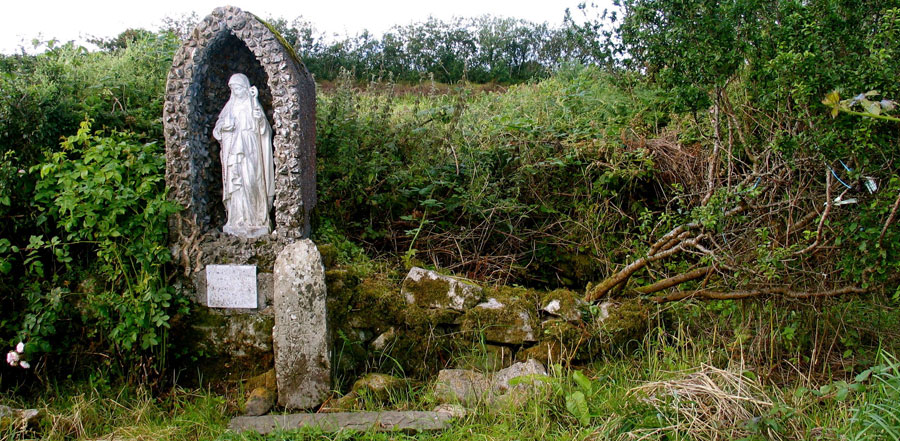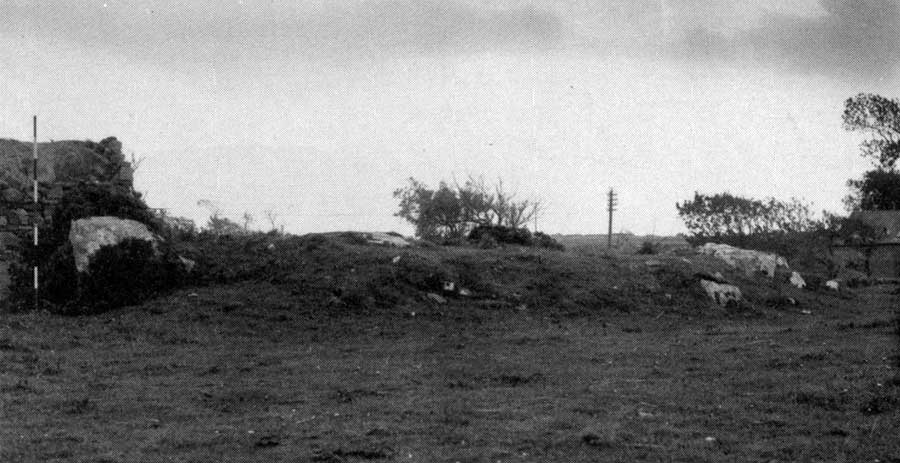Saint Bridget's well
Cliffoney is a small, ancient and extremely historic village in north Sligo, within the ancient kingdom of Carbury, close to the headland at Mullaghmore on the west and the fabulous Gleniff Horseshoe to the east. The name Clia Fuinne means the Ford of the Wattles or Hurdles, from the ancient ford over the Cliffoney river at the north end of the village. This has always been a main routeway, along the coastal plain between Donegal and Sligo.
The principal villages in the barony are Cliifony, Grange, and Carney but they call for no remark, save that near the first-named village, within a few minutes walk of the hamlet, may be observed a small building, in plan similar to the bee-hive huts to be seen in Innismurray.
Its internal diameter is about 15 feet; the wall of considerable thickness, with a doorway or opening facing the west. A flight of steps, formed of very large stones, leads nearly to the bottom of the enclosure, which lies considerably below the level of the surrounding land.
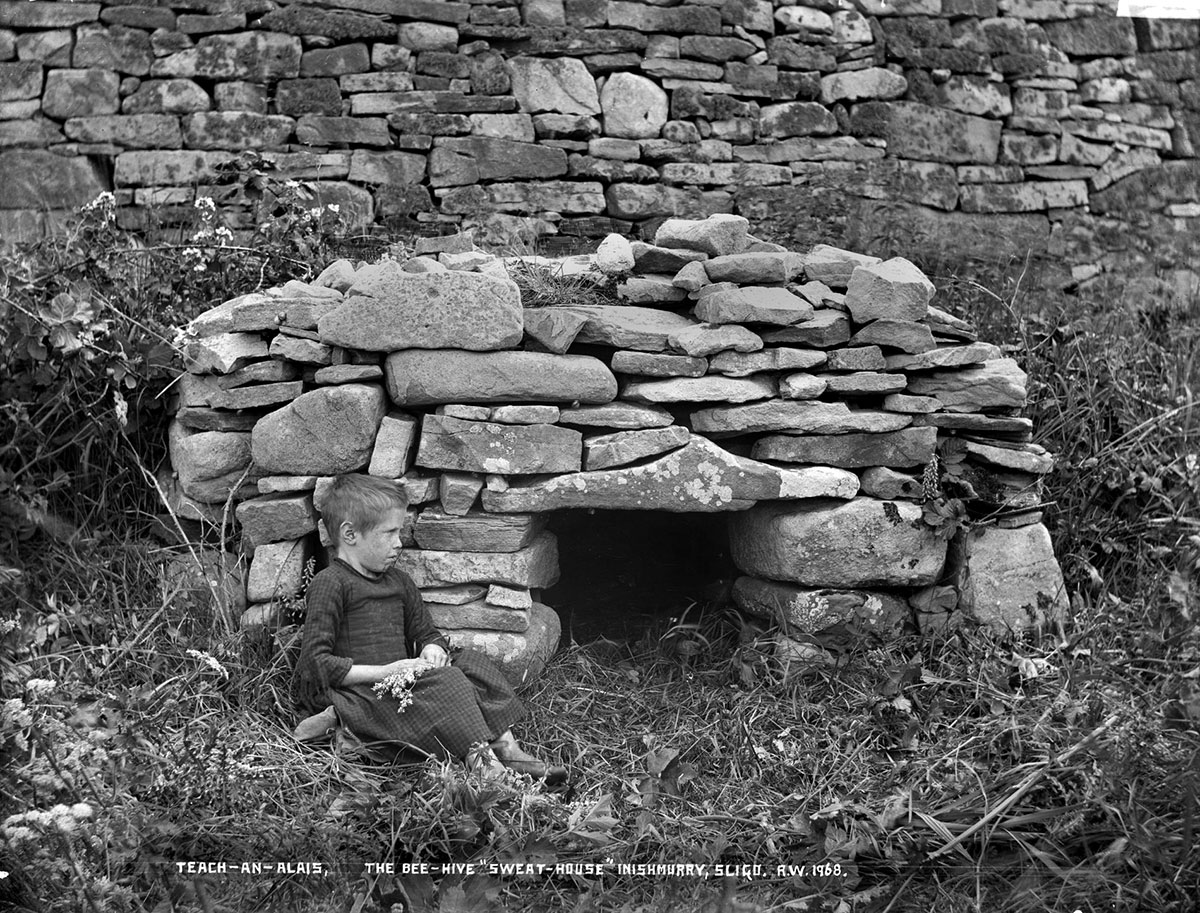
The pool or bath is now represented by a mere puddle, drainage operations in the neighbourhood having cut off the supply of water, which was anciently conveyed by a channel, the mouth of which, formed like a flat-headed opening, such as we see in the ecclesiastical round towers, is still visible.
This well is called Tober Brigid, and it is quite probable that at some period of her life Saint Brigid sojourned at this very spot. In one account of her life it is stated, that whilst in Connaught she went to receive the Eucharist from Bishop Bron, a contemporary of St. Patrick, and Bishop of Killaspugbrone, near Strandhill.
"Now, between this Church and St. Brigid's well, the distance is within an easy palfry-ride, or chariot-drive, and we may know from numerous ancient sculptured representations, as also from ecclesiastical and bardic history, that chariots of the fifth and some succeeding centuries were finely built, findruine embellished, with large spoke wheels and high-stepping, well-trained horses." At all events, there is strong presumptive evidence that St. Brigid was at one time in Carbury, where a well, or bath, bearing her name, is now to be found.
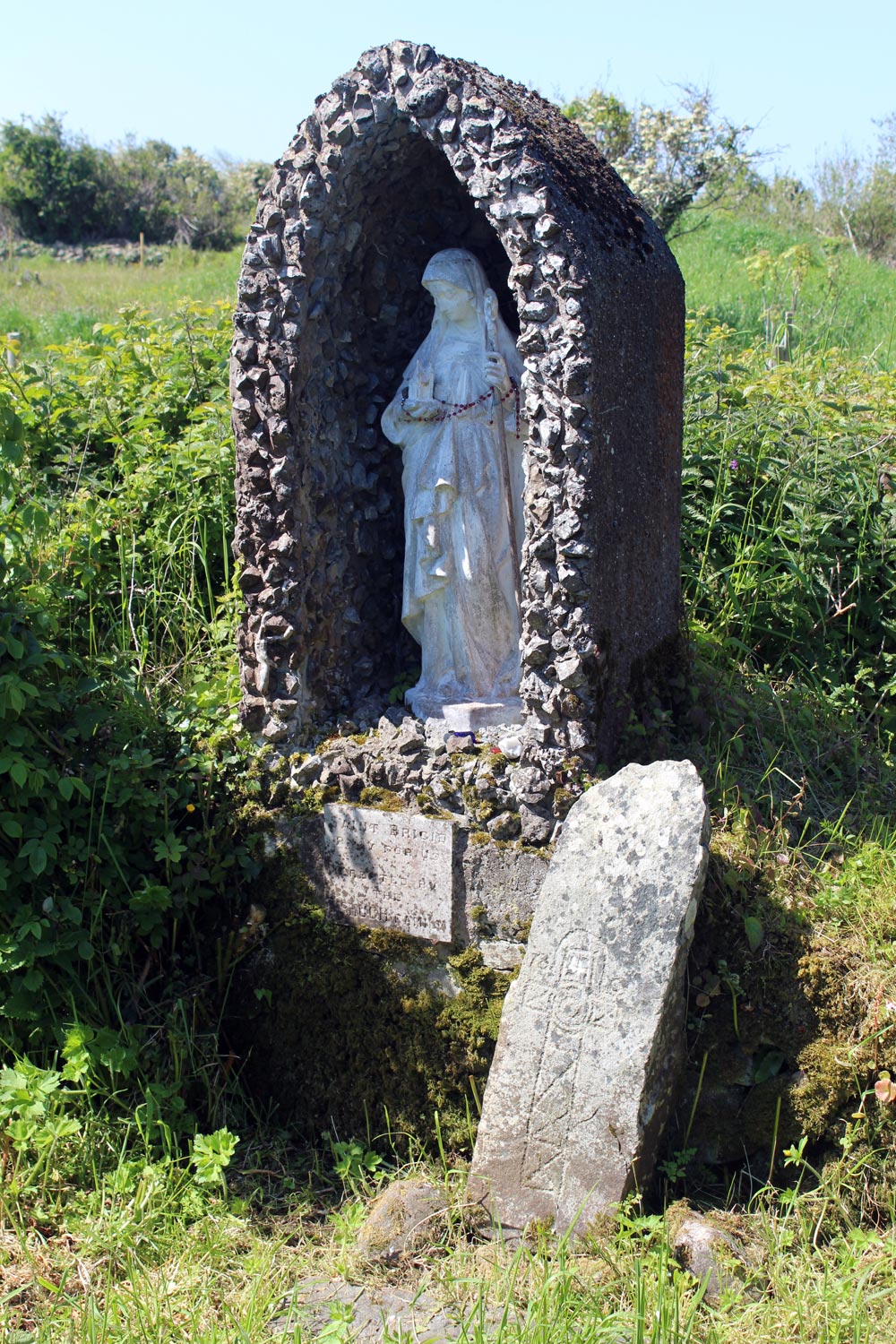
The Rev. John O'Hanlon, in his "Lives of the Irish Saints," gives the following account of an incident in the life of St. Brigid, which may be said to identify the pool or well near Cliffony :-
"We are told, also, that when St. Brigid dwelt in this part of the country she was often accustomed to seek a pool of cold water near the Monastery. There she remained immersed,while she prayed and wept, during the whole night. This vigorous mortification at one time she endured while the snow and frost prevailed, and in presence of one from among the sisterhood. But as this rough corporal treatment surpassed the powers of nature to endure for any continued length of time, so it pleased the goodness and mercy of God to prevent it by a miracle.
On a night immediately following the occurrence related, Brigid went with the same companion to renew like austerities; but on arriving at the pond, it was found to have become completely dry, nothing appearing but the exposed bottom sands. Surprised at this occurrence, the virgin returned home; yet, at the earliest hour of day-break on the following morning, its waters were found to have returned to their usual level in the lough.
St. Brigid resolved the third night similarly to repeat her practice, when a similar disappearance of the waters took place on her approach. These waters returned to the bed of the lough early on the following morning."
Mr. Wakeman thus describes the well. " There is no trace of cut stone, or apparently of cement, having been used in the building; but on one of the steps referred to, two small Roman crosses, evidently of great antiquity, appear shallowly inscribed by the aid of a punching instrument. The most interesting feature, however, at the well or pool is a rather rough unhammered block of hard reddish sandstone, measuring 2 feet 11 inches in length, by 10 feet in breadth, and about 5 inches in thickness.
This stone is apparently of the monumental class, and just one upon which an ogham inscription might be expected. It presents, however, no lettering of any kind ; but upon one of its larger faces has been deeply inscribed or punched, the figure of a cross, of the kind usually styled Celtic.
There remains at St. Brigid's well no legend relative to sacred trout or other fish; but on the Saint's Day, the first of February, each year a patron is held, during which pilgrims pass round the enclosure in a direction from east to west, the course of the sun,' at the same time performing what they doubtless believe to be religious rites. Upon other days solitary devotees appear, or there may be more than on; and, as we find in the Far East, the surrounding bushes are more or less draped with humble offerings, the most valuable, probably, the poor people can afford."
Quote from W. G. Wood-Martin's History of Sligo.
There are a number of megalithic mounments around the village in a line that closely follows the modern road. There are a number of raths or ringforts in this area, showing that this was an important crossing point in ancient times. St. Brigit's well, in the top photo, was a popular site with passing pilgrims. The well is within a ploughed out ringfort, and was one of five wells within a small area.
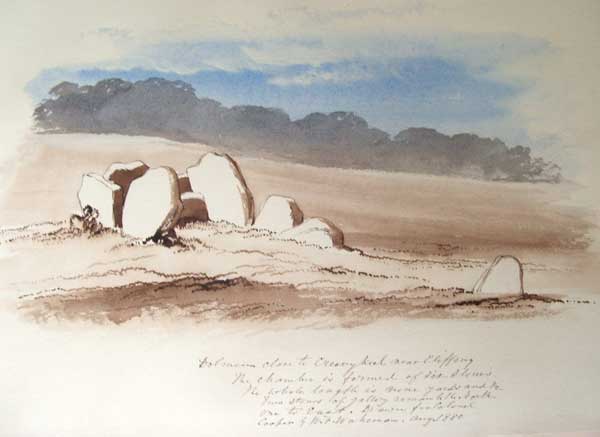
The megalithic monuments around Cliffoney are court cairns, a type of communal building with a large open area and an inner chamber. They generally date to around 4,000 BC. The restored court at Creevykeel is one of the largest and finest in the country. It was excavated by the Harvard Archaeological Mission in 1935, one of the first scientific digs to take place in Ireland. There are the remains of three more courts in Cliffoney, while a fourth, illustrated by Wakeman in 1880, above, was destroyed around 1900. The monuments are found along a ridge of sandstone a small geological island in the surrounding limestone.
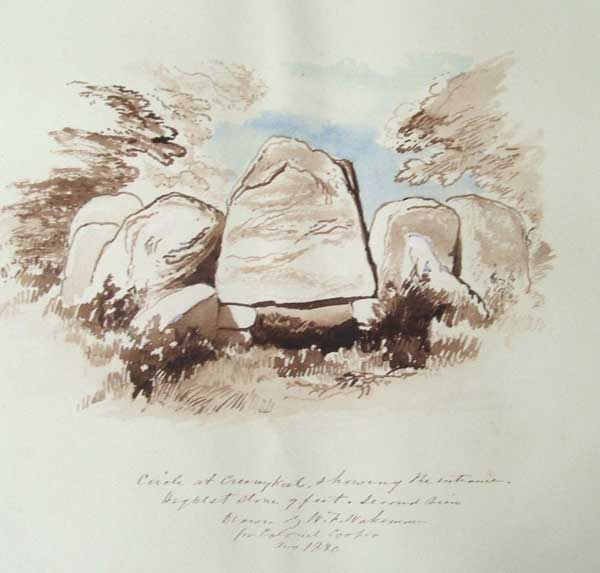
Wakeman
The artist William Wakeman was hired to travel around County Sligo and illustrate the monuments in the late 1870s. The results of his work are kept in two large sketchbooks in Sligo County Library. Wakeman drew three of the Cliffoney monuments including a rare view of Creevykeel with the entrance stone standing upright.
There were originally five megalithic monuments in Cliffoney, but very little remains of any of the sites in comparison to Creeveykeel which was excavated and restored in the 1930s. Two of the megaliths are covered in thorn bushes and brambles, and few stones can be seen today. The monument once located 300 meters north of Creeveykeel seems to have been completely destroyed when a blacksmith built a forge there. All that remains is Wakeman's watercolour and a description by Wood-Martin, who saw a cup marked stone there.
Wakeman left a wonderful collection of images of the Sligo monuments and landscape. Thirty of these works can be viewed online; the entire collection, in two sketchbooks, one from around the county, the other from Inishmurray, can be viewed by appointment.

